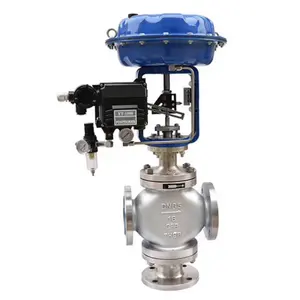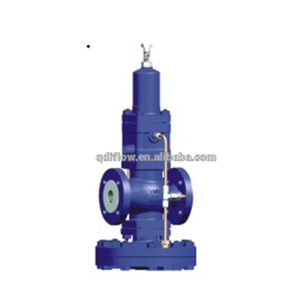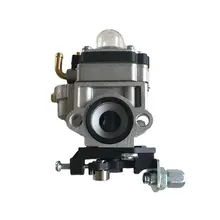What are Pressure Regulators
Pressure regulators are essential components in various systems that manage the flow of gases or liquids. They are designed to automatically cut off the flow of a substance at a certain pressure, ensuring that the output pressure is kept constant despite variations in the input pressure and downstream flow requirements. This function is critical for safety, efficiency, and process control in many applications, ranging from industrial manufacturing to residential plumbing.
The principle of operation for a pressure regulator is based on the balance between the force exerted by a spring and the pressure of the fluid being regulated. Inside a typical regulator, there is a spring that pushes against a diaphragm or piston connected to a valve. When the downstream pressure drops below a set point, the spring pushes the valve open, allowing more fluid to flow and increase the pressure. Conversely, if the downstream pressure exceeds the set point, the fluid pressure pushes against the diaphragm or piston, closing the valve to reduce flow and maintain stable pressure.
Pressure regulators are vital for anyone who relies on equipment that operates within certain pressure parameters. They are found in a wide array of sectors, including aerospace, pharmaceuticals, oil and gas, water management, and food and beverage production. They ensure that gases or liquids are delivered at safe and effective pressures for various processes or equipment operation.
Types of Pressure Regulators
Pressure regulators come in diverse forms to accommodate different applications and media types. Here's a closer look at some common varieties:
Direct-Operated Pressure Regulators: These regulators rely on a simple design where the system pressure is controlled directly by a spring-loaded diaphragm or piston. They are commonly used for low to moderate flow rates and are suitable for applications like residential water systems or small air compressors.
Pilot-Operated Pressure Regulators: Utilizing an auxiliary pressure source for control, these regulators can handle higher flow rates and pressures. They are prevalent in industrial settings where significant fluctuations in flow or pressure must be managed efficiently.
Back Pressure Regulators: These are designed to maintain a specific setpoint pressure upstream of the regulator. They're often employed in systems that require a consistent back pressure for process control or as relief devices.
Pressure Reducing Regulators: These regulators reduce incoming pressure to a lower, more manageable level downstream. This type is widely used across industries to protect downstream equipment from damage due to excessive pressure.
Dome-Loaded Pressure Regulators: Dome-loaded regulators use gas pressure on top of a diaphragm instead of a spring to control outlet pressure. This allows for more precise control over large flow rates and is commonly seen in applications requiring consistent outlet pressures regardless of fluctuating inlet pressures.
How to choose Pressure Regulators
Choosing the right pressure regulator requires understanding your system's needs and the characteristics of different types of regulators. Considerations include:
Media Type: Identify whether you're regulating gas or liquid, as this will affect material compatibility and design requirements. For instance, oxygen gas systems require regulators that prevent rapid combustion.
Operating Pressures: Ensure that both the inlet and outlet pressures fall within the regulator's capabilities. Using a regulator not rated for your system's pressures can lead to failure or unsafe conditions.
Flow Requirements: The regulator must be able to maintain consistent pressure at your system's maximum flow rate without causing excessive drops or surges in pressure.
Material Compatibility: The material of the regulator should be compatible with the media it will contact to prevent corrosion or contamination. For example, stainless steel might be necessary for high-purity applications.
Environment: Consider environmental factors such as temperature extremes, which may influence material selection and regulator design.
When sourcing from B2B platforms like Alibaba.com, it's also essential to consider factors such as supplier reliability, customization capabilities for specific applications (like ODM), and additional services like local support locations for after-sales assistance.
Best Pressure Regulators on Alibaba.com
For businesses seeking dependable and diverse options in pressure regulators, Alibaba.com stands out as an exceptional marketplace. With its vast network comprising suppliers from around the globe, Alibaba.com offers an unparalleled selection of regulators suited for any application—be it manufacturing plants, construction works, or even home use. The platform’s user-friendly interface simplifies finding products tailored to specific requirements such as material composition ranging from brass to stainless steel or aluminum alloy, suitable for various media like oxygen gas or L.P.G., and available in multiple colors.
Alibaba.com understands that businesses not only look for quality products but also value-added services such as efficient order handling, delivery options, and communication tools allowing interaction in local languages—features that streamline purchasing processes significantly. Furthermore, Alibaba’s Trade Assurance service ensures transactions are protected until delivery completion—bolstering buyer confidence in their purchasing decisions.
The commitment of Alibaba.com towards empowering small and medium-sized enterprises with access to global markets positions it as an integral partner for sourcing commercial products like pressure regulators. The platform's dedication towards providing secure trade solutions reflects its ethos "to make it easy to do business anywhere," ensuring businesses can procure with assurance regardless of their location worldwide.
Common FAQs for Pressure Regulators
What is the function of a pressure regulator in a system?
A pressure regulator's primary function is to maintain a constant output pressure in a system, regardless of variations in input pressure and flow demand, to ensure safe and efficient operation of equipment.
How do direct-operated and pilot-operated regulators differ?
Direct-operated regulators control system pressure directly through a spring-loaded mechanism and are suited for lower flow rates, while pilot-operated regulators utilize an auxiliary pressure source for higher capacity and stability in controlling larger flow rates and pressures.
Can one type of pressure regulator be used for any gas or liquid?
No, pressure regulators are designed for specific types of gases or liquids, and it's crucial to choose one that is compatible with the media's properties, such as its corrosiveness, purity level, and temperature.
How does temperature affect the choice of a pressure regulator?
Temperature can impact material integrity and performance. Selecting a regulator with materials that can withstand the operating temperature range is essential to prevent malfunctions and maintain safety.
What materials are commonly used in the construction of pressure regulators?
Common materials include brass, stainless steel, aluminum, zinc alloy, and plastic. The choice depends on factors like media compatibility, temperature resistance, and application-specific requirements.
What should be considered when selecting a pressure regulator for oxygen service?
For oxygen service, it is critical to use regulators made from non-combustible materials, such as brass or stainless steel, designed to prevent ignition and ensure safe operation.
How do back pressure regulators function differently from pressure reducing regulators?
Back pressure regulators maintain a set upstream pressure by releasing excess pressure as needed, whereas pressure reducing regulators decrease incoming high pressure to a stable lower level downstream.
Are there pressure regulators available for high-temperature applications?
Yes, there are regulators specifically designed with materials and construction suitable for high-temperature media. It is important to specify the temperature range when sourcing these regulators.
Can I get a customized pressure regulator for my specific application?
Customization options like ODM are available for many types of pressure regulators. This allows businesses to have regulators tailored to their unique requirements.
What should I look for in terms of maintenance when choosing a pressure regulator?
Consider ease of maintenance and the availability of repair kits or local service locations. Some designs offer simpler maintenance procedures and longer service intervals.
Is it possible to use a single regulator for different gases in various applications?
Using one regulator for multiple gases is not recommended unless it is rated for those specific gases. Material compatibility and application requirements must be carefully considered.
How does flow capacity affect the selection of a pressure regulator?
Flow capacity must be matched with the system's maximum flow demand; an undersized regulator can create excessive pressure drop whereas an oversized one may lead to instability in control.
What role does the environment play in choosing the right regulator?
Environmental factors such as exposure to chemicals, moisture, or extreme temperatures can dictate the need for more robust materials or protective features in the regulator design.












































 浙公网安备 33010002000092号
浙公网安备 33010002000092号 浙B2-20120091-4
浙B2-20120091-4